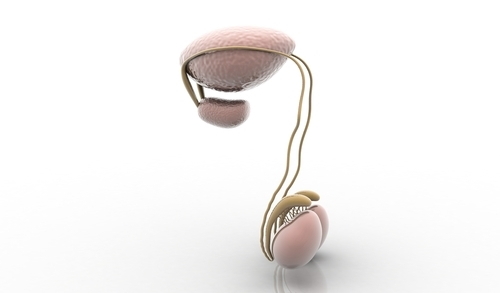Testicular torsion occurs when a testicle revolves and causes the spermatic cord from which it is suspended to twist and cut off blood flow to the testicle and scrotum. Often, testicular pain sets in quickly, making it the key symptom. Because the condition halts the flow of blood to the testicle, rapid treatment is needed to prevent tissue death (necrosis) and testicular removal. If treated within a few hours, the testicle can typically be salvaged. Waiting any longer can result in irreversible damage and affect a man's fertility.
Causes of Testicular Torsion
Testicular torsion mainly affects adolescent and newborn boys, with one in 4000 males under the age of 25 years experiencing testicular torsion at some point. It is also the most common reason for the loss of a testicle in these age groups.
In adolescent boys, torsion results mainly from the testicle not being completely attached to the scrotum. This allows the testes to move around freely and twist. The added weight of the testicle after puberty may also increase this groups chance of torsion.
In newborn boys, torsion occurs—at times several months before birth—when the protective sac around the testicle doesn’t attach fully to the inside of the scrotum.
As for adults, one study found that 64 percent of adult males with testicular torsion also had some sort of growth of the testicle, such as a tumor.
The exact cause of testicular torsion is unknown. Because it sometimes occurs within members of the same family, torsion may be partially genetic (inherited). In addition, injury to the scrotum can cause swelling of the testicle, which may increase the chance of the condition occurring.
Symptoms of Testicular Torsion
Testicular torsion can involve one or both testicles. The most common symptoms are:
- Pain
- Swelling of the scrotum or groin area
- Bruising or firmness of the scrotum (in newborns)
- Redness of the scrotum
- Nausea and vomiting
- Loss of the cremasteric reflex, which is responsible for moving the testicle toward the body in response to touch, cold, exercise, or emotional excitement
Diagnosis of Testicular Torsion
Doctors may rely upon the following to diagnose torsion of the testicle:
- Physical examination
- Complete medical history
- Scrotal ultrasound, an imaging test that uses sound waves to look at blood flow to the testicles
Because of the potential for damage to the testicle from loss of blood flow, prompt diagnosis is essential. In some cases, a doctor may take a child directly to the operating room for surgical diagnosis and treatment.
Treatment of Testicular Torsion
The main treatment for testicular torsion is surgery to untwist the spermatic cord. The testicle is also attached to the inner surface of the scrotum with sutures to prevent torsion from occurring again.
References
Kar A, Ozden E, Yakupoglu YK, et al. (2010). Experimental unilateral spermatic cord torsion: the effect of polypolymerase enzyme inhibitor on histopathological and biochemical changes in the early and late periods in the ipsilateral and contralateral testicles. Urology 76(2):507.
Schneck FX, Bellinger ME. (2007). Abnormalities of the testis and scrotum and their surgical management. Campbell-Walsh Urology. 9th ed.


